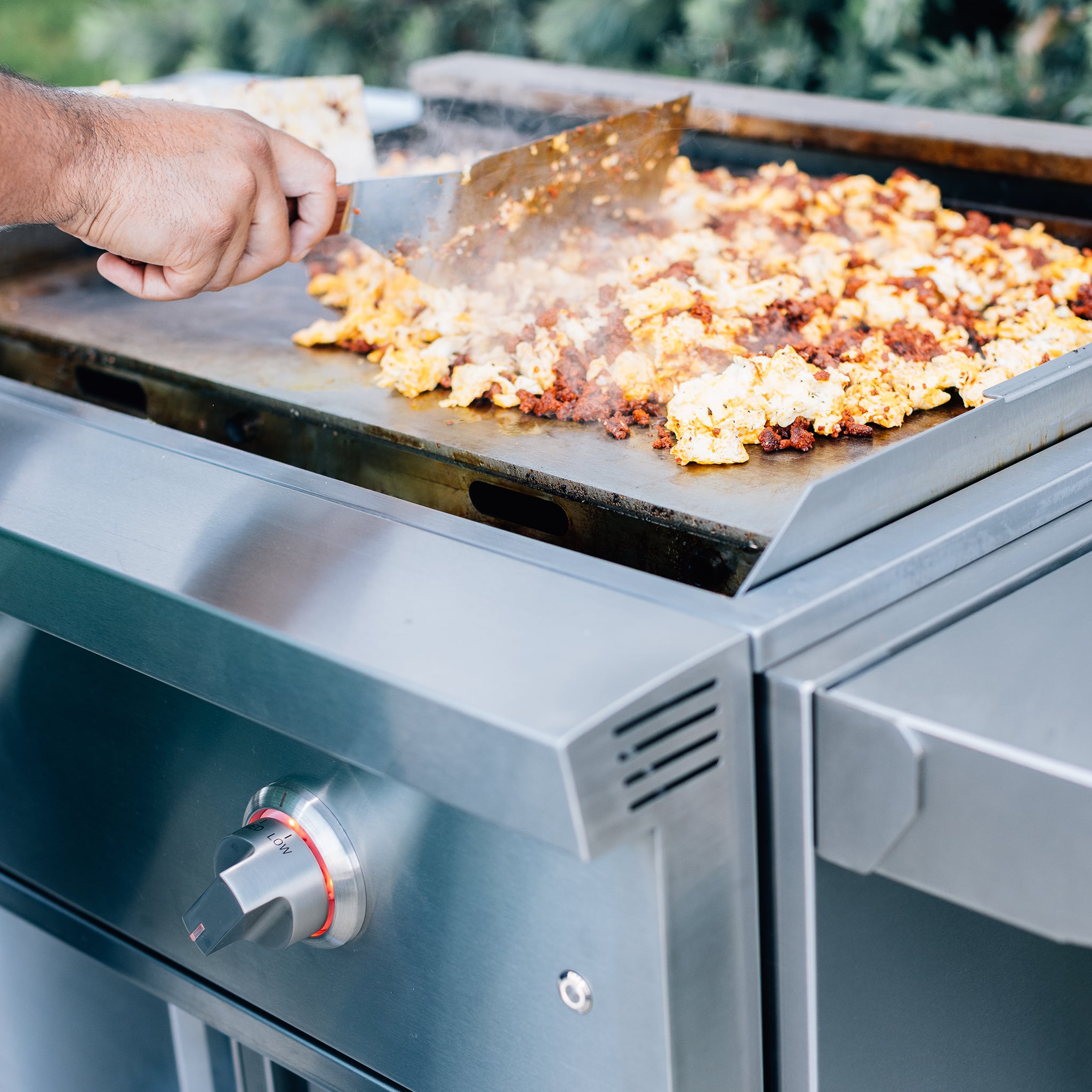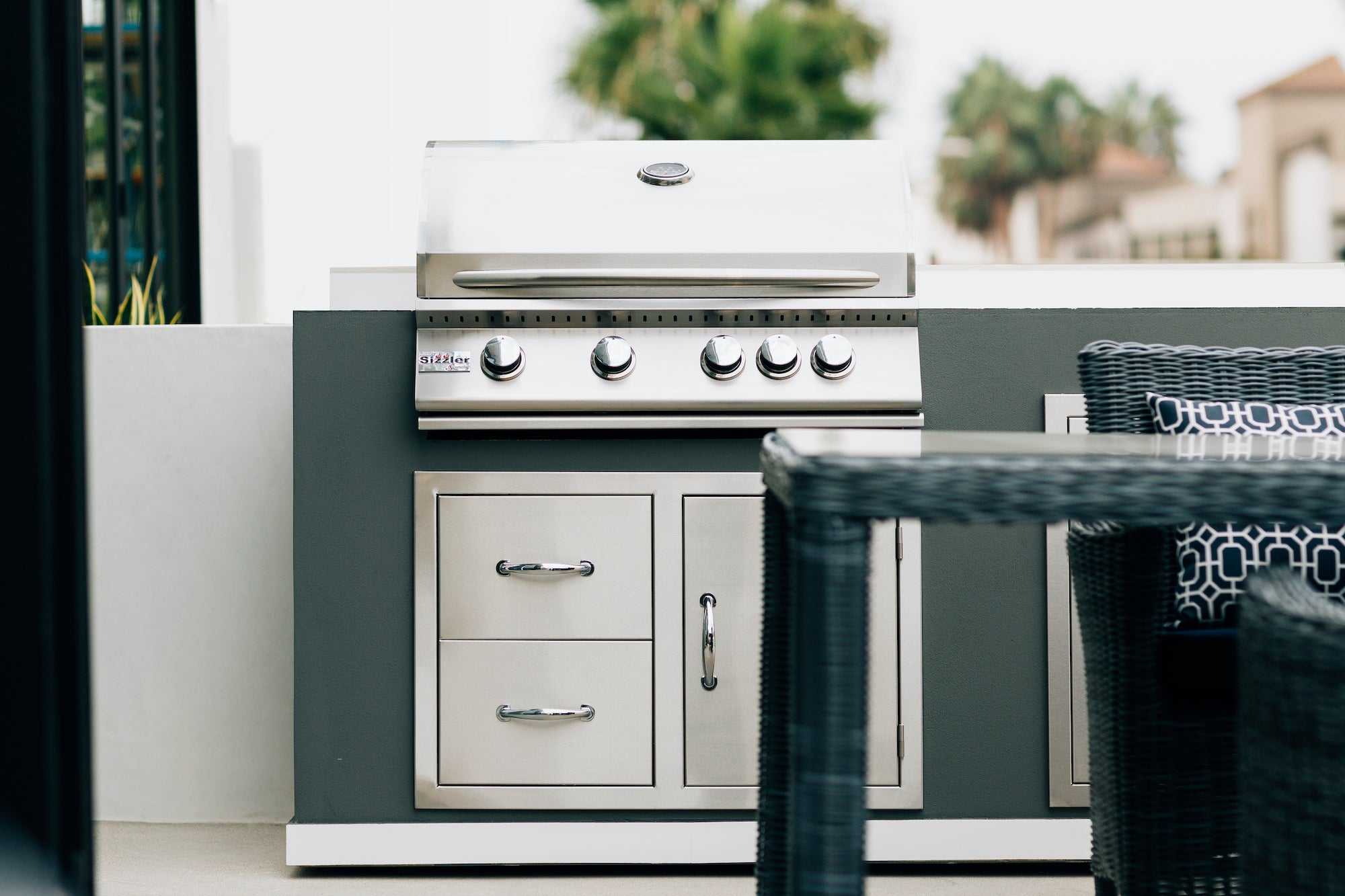Many people are intimidated by gas grills, but they shouldn’t be. Gas grills are easy to use and require minor cleanup. If you’ve wanted a way to grill delicious food without having to stoke a fire or deal with the charcoal, then it’s time for you to learn how to use a gas grill. With these simple tips and best practices, you will be grilling in just minutes!
If you’re in the market for a new gas grill or are just curious about how to use your current grill better, we have some great tips and tricks for you! Gas grills are much more manageable than charcoal grills, requiring less skill to regulate and maintain the fire. This blog teaches the basics of operating a gas grill so that you’ll be ready when it comes time for cooking up some mouth-watering barbecue dishes.
Grilling with Gas: Prepare the Grill
The first step in learning how to use a gas grill is to read the user manual. With a wide variety of gas grills on the market, each has different features, options, labeling, hardware, and tools. Get acquainted with the details of your grill to provide the safest environment for your family and home.
With a good understanding of your grill’s features, you can prepare the fuel source. Propane grills are the more common gas grill option, but natural gas is another popular choice for homeowners. Natural gas grills require an in-home installation by a professional that will connect to your home’s gas line. Propane uses portable tanks for fuel easily transported for refilling or taking the grill on the road.
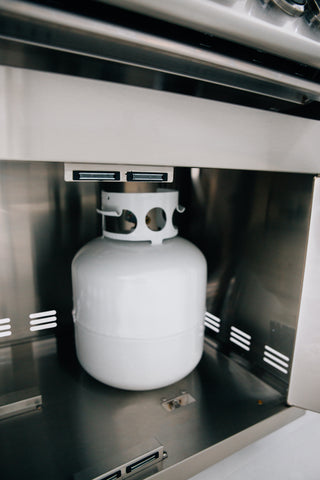
The convenience of a natural gas connection is a constant source of fuel that doesn’t need refilling. When grilling with propane, check the level of your fuel supply to avoid running out before dinner is finished. A 20-pound propane tank offers approximately 25 hours of grilling, depending on the size of your grill and the number of burners running simultaneously. Experienced grillers have learned to always have a filled spare tank ready just in case.
Before starting your grill, it is helpful to gather the tools and accessories you will need because you should never leave a lit grill unattended. Gather everything required for what’s on the menu before you begin, such as barbecue mitts, metal tongs, spatulas, instant-read thermometers, containers, and grill brushes.
Grilling with Gas: Starting Your Gas Grill
Gas grills are easier to use than charcoal grills because it is easier to start and regulate the temperature, and there are no coals and ash to remove. Once you’re ready to start your grill, even though it’s simpler than charcoal, there are still some prudent steps to follow:
- To prevent gas from building up in the cooking chamber, always begin by opening the lid.
- Visually inspect hoses and connections for gas leaks.
- Open the regulator valve on the propane tank or natural gas line to supply fuel to the burners.
- Ignite the grill according to the user manual. Some grills turn on automatically when turning the burner knob, others have ignition push-buttons, and basic models require a lighter wand or long matchstick to ignite the first burner.
- With the first burner lit, slowly turn on each successive burner needed until ignited.
- Allow the grill to heat up for grilling, called “preheating.”
Grilling with Gas: Cooking on a Gas Grill
Once you have preheated your grill, you’re ready to create culinary masterpieces! As with everything, practice makes perfect, but here are some tips to get you started:
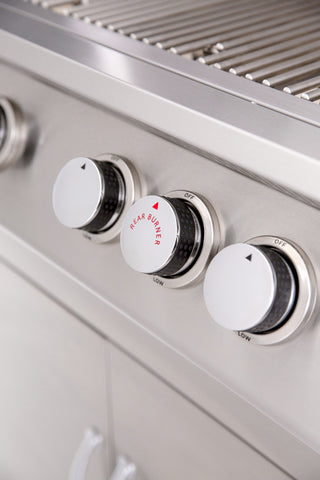
- With the grill warmed up, use a metal brush tool to scrape and clean your grill grates, removing any burnt food debris or grease. Clean grill grates are essential to a pleasurable grilling experience, reducing the chance of food sticking to the grates and tearing apart.
- Before placing your food on the grill, turn the heat down and allow the grill to adjust to the appropriate temperature. Most foods will burn quickly when the grill at maximum power.
- When grilling small amounts of food, turn off the extra burners to save gas or propane, and create a cool-down zone if your food starts burning.
- Arrange your food on the grill evenly, giving yourself room to turn and flip as needed, or rearrange items, so they cook uniformly.
- Thinner foods and smaller portions can be grilled directly over the flame (called “direct heat”) in a few minutes per side. Hamburgers, thin steaks and pork chops, boneless chicken pieces, hearty types of fish fillets, and sliced vegetables are all examples of foods that are ideal for grilling over direct heat.
- Larger and thicker food portions will take longer to cook through and burn over direct heat, requiring a different approach. In these cases, placing the food over the unlit areas of the cooking surface (called “indirect heat) will keep the exterior of the food from burning while the whole finishes. You can prepare a grill for indirect heating by lighting only one side of the grill and placing roasts, whole fish, bone-in poultry pieces, ribs, or whole chickens over the unlit portion.
- Follow the recommended cooking times and directions from the recipe, resisting the temptation to repeatedly open the lid, flip the food, or cut into it. Over manipulating your food slows down the process and produces inconsistent results.
- When the food is done, remove it from the grill and allow it to rest for five to ten minutes before serving.
Grilling with Gas: How to Turn Off a Gas Grill
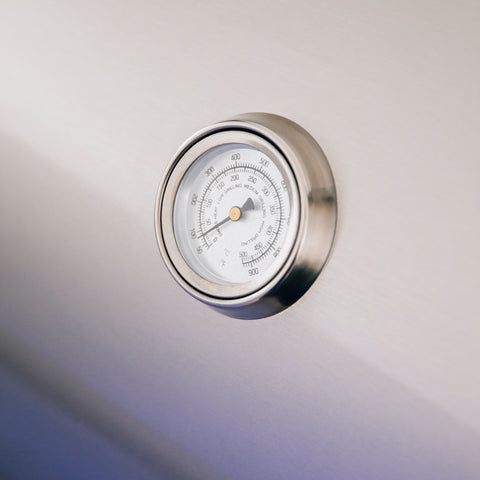
After removing the food from the grill, turn off the burners and close the valve on the propane tank or gas line. While the grill is still hot, use the grill brush again to remove any charred debris, grease, or sauce that has accumulated. It is much easier to clean the grill grates when hot and saves time at the next barbecue. Once the grill has cooled, close the lid and use your grill cover to keep the grill clean and protected until subsequent use.
With these simple steps, you can get to safely grilling your favorite steak or fish for a weeknight dinner outside. To learn more about how gas grills work, check out our blog: “The Anatomy of a Gas Grill- Understanding How They Work.”

